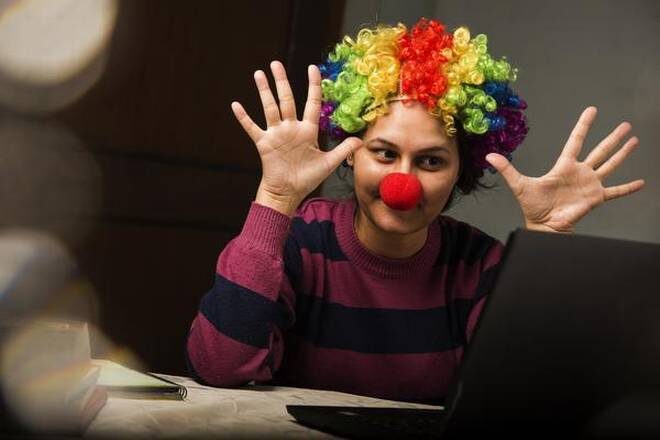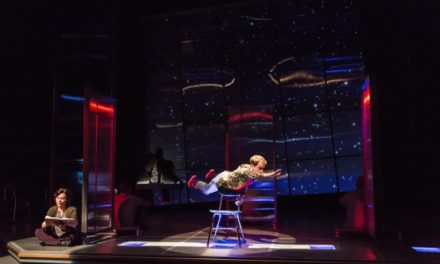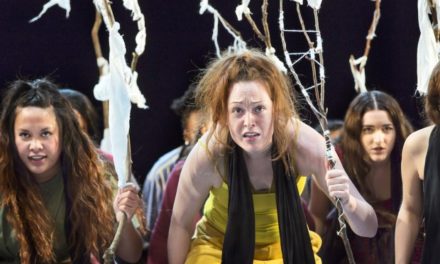As live play performances and readings crowd virtual platforms, theatre is going through a ‘dramatic’ shift from stage to screen. Are new formats here to stay?
Actors wait with bated breath for their scene. This time, they are not backstage. At home, they face laptops propped on boxes and books. Dialogues flow, scenes shift and an audience, ranging from a 100 to 2,000, from around the world, watches.
In a COVID-19 world, where performances have been forced to migrate online to survive, live theatre has found creative ways to adapt. That said, the democratization of theatre is perhaps the only consolation: all virtual theatre poses many novel challenges, starting with denying performers the ability to connect with the energy of a live audience. A full-fledged live play online is a result of weeks of hours-long rehearsals and the determination to “crack the tech.” A play is not a play without its fair share of blocking, physicality, improvisation and stage (in this case, screen) presence.
As theatre outfits across the world shift from stage to screen, many opt for the more tech-friendly live reading or monologue options while others go the extra mile to present an entire play with a solid cast through virtual platforms. Either way, with virtual theatre, you are always “at the mercy of the Internet Gods,” as director and co-founder of Mumbai-based QTP, Quasar Thakore Padamsee aka Q, puts it.
Groping in the dark
Chennai-based performing arts company, Evam, is more than 10 plays into this journey. Their corporate training wing has been doing live plays tailored around subjects such as prevention of sexual harassment, online work environments and so on. Ask co-founder Sunil Vishnu what this shift means, and he says it is nothing less than a “revolution” for theatre.
“In March, around Women’s Day, we had about 50 performances lined up. We managed to present 25 of them. As COVID-19 hit, the rest vanished. It was a shock,” he says.
The following months of April and May were spent trying to crack the new medium. The challenges were manifold: from learning a new medium and figuring out how to be engaging on it, to understanding what would get people there. “Around that time, people also started working online which means they are already online for six to seven hours a day,” continues Sunil, adding, “ What could one create that would give them a different experience?” In this sense, thinking from an audience’s perspective was key.
From matching the backgrounds and eyelines to keeping up with the lag on a virtual platform, the process is ever-evolving, especially when multiple actors log in from across the country.
There have been instances where actors sent each other matching bedsheets via Dunzo to create the same backdrops, Sunil adds. The direction, then, would naturally involve a certain choreography that would cater to the screen: for instance, if multiple screens are involved on a window, actors’ positions and body language need to align with co-actors. Actors are most often groping in the dark, because they cannot always see their co-actors on screen. Careful, scene-by-scene choreography then, is necessary. This is ‘blocking’ in the online space.
- The Tovstonogov Bolshoi Drama Theater in St Petersburg staged a brief version of Anton Checkov’s Cherry Orchard, within the popular online game Minecraft in June. Ninety players were able to watch the performance from within the Minecraft version of the Bolshoi Drama Theater. While others had to join the YouTube live stream
- The Gorch Brothers, an up-and-coming troupe in Tokyo, stages contained performances on the back of trucks, that can be driven around the country
- Conquest Theatre, in Canmore, Canada put up two one-act plays in a forest — in founder Marjorie Sutton-Bridge’s acreage — with the woods as the backdrop, with social distancing in place
In Q’s opinion, the actors should be given all the credit for being able to execute these intricacies. His Every Brilliant Thing, an intimate theatre piece on mental health that requires audience participation, recently went online. Performed by Vivek Madan, the play followed the format of a free-flowing informal conversation, in a bid to adapt. The audience at the Zoom session were asked to unmute themselves and join in whenever they felt like it. Q says, “In the first couple of rehearsals, Vivek found it liberating because he didn’t have to be aware of the audience. But, as we started getting to the crux, we realized it is tough. In the theatre, we take a line, get a response and then build on it. Here, there is no response.”
For such an intimate show, the online medium works well, since it allows a certain sense of anonymity. Vivek adds, “It is acting to a camera,, and you are alone. At the end of the day, you are performing as well as checking whether you are on frame. And pulling back where you normally would let go. Sometimes, it is not necessary to give as much because you are too close to camera and the dishonesty of the moment surfaces.”
Times are a-changing
It is not surprising to notice the shift in language, when it comes to screenplay. Sunil agrees, “If we are doing an existing script, we work with that. But, when a new script emerges we will be cognizant of the medium. One needs to think like they are writing for the camera or an OTT platform.”
For instance, actors are given marking spots (like, while shooting movies) for a Zoom performance. Actors also need to have a presentable room, for background. Even casting calls speak a different language, these days. For instance, directors are looking for actors who have roommates (and can act alongside).
Wider reach
Chennai-based Dramact recently presented Neil Simon’s comedy, The Odd Couple. Over two-and-a-half hours long, it was performed live on Zoom and streamed simultaneously on YouTube and Facebook. The response was overwhelming, with 2,000-odd people watching it from across the globe, says director Nilu, suggesting that audiences too are warming up to this format. “There is also the joy of the fact that there are hundreds of people who would want to watch it later, and now they actually can. There is so much potential.”
Does this format have an expiry date? Many artistes don’t think so: they see it existing parallel to live performances, maybe even as an independent genre. Nilu adds, “The reach is phenomenal and I see it as a great possibility. If we manage to tailor it better, I don’t see why it can’t exist. It is in fact, giving theatre much larger opportunities.”
This article was originally posted at The Hindu on August 15, 2020 and has been reposted with permission. To read the original article, click here.
This post was written by the author in their personal capacity.The opinions expressed in this article are the author’s own and do not reflect the view of The Theatre Times, their staff or collaborators.
This post was written by Gowri S.
The views expressed here belong to the author and do not necessarily reflect our views and opinions.

















